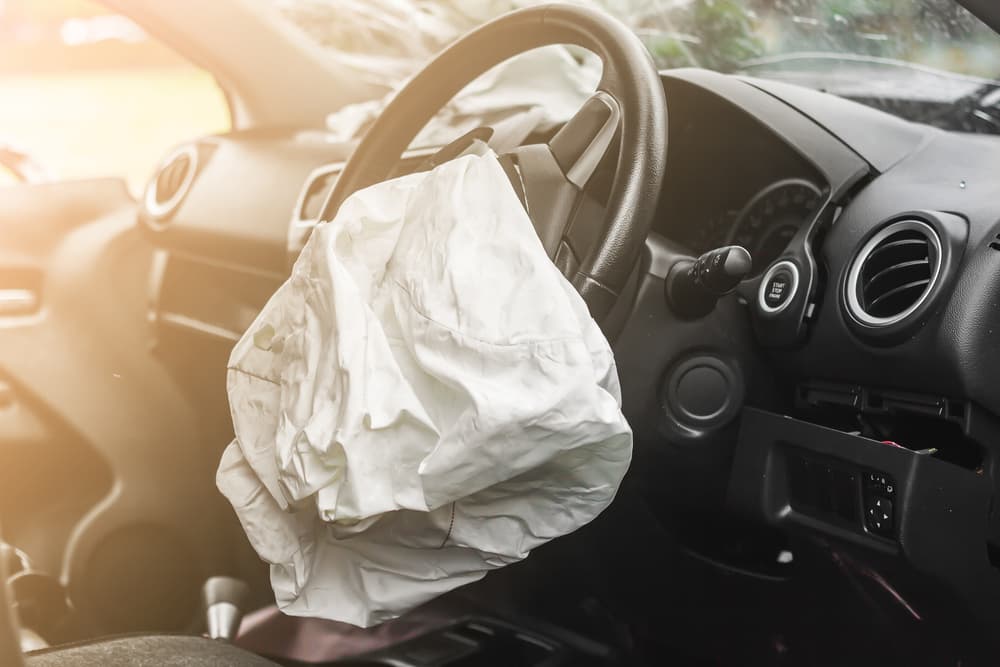At any given time, hundreds of millions of vehicles are traveling our nation’s roads. With so much traffic, you always risk getting into a car accident. In many cases, another driver’s negligence causes an auto accident that injures or kills the occupants in the other vehicle. Car accidents can also occur due to mechanical failures and other reasons.
You may need to understand the different types of car accidents and their causes so you can stay safe on the road. If you suffered injuries or lost a loved one in a car accident another driver caused through their carelessness or recklessness, you could obtain compensation from those responsible.
To obtain a free review of your injury claim and advice regarding your rights and options for obtaining compensation for your car accident injuries, contact an experienced car accident attorney right away.
Kinds of Car Accidents
Many types of car accidents can occur, each with its own characteristics and potential for damage.
Some common types of car accidents include:
- Rear-end collisions. These occur when one vehicle crashes into the back of another vehicle. It often happens when the leading vehicle suddenly slows down or stops, and the following vehicle fails to maintain a safe distance.
- Head-on collisions. Among the most dangerous types of accidents, head-on collisions happen when two vehicles traveling in opposite directions collide with their front ends. These collisions often result in severe injuries or fatalities.
- Side-impact collisions. Also known as T-bone or broadside collisions, they occur when the front of one vehicle strikes the side of another vehicle. Side-impact collisions commonly happen at intersections when one driver fails to yield the right of way.
- Sideswipe collisions. In these accidents, two vehicles traveling parallel to each other make contact. They can occur when drivers change lanes without signaling properly or checking their blind spots, or they misjudge the distance between their vehicle and the other one.
- Rollover accidents. Rollovers involve a vehicle flipping onto its side or roof. They typically happen when a driver loses control of the vehicle, such as during sharp turns or when a vehicle strikes a curb or obstacle.
- Single-vehicle accidents. These occur when a vehicle crashes without involving another vehicle. Factors like driver error, speeding, distracted driving, adverse weather conditions, or mechanical failures can cause these crashes.
- Multi-vehicle pileups. Also known as chain-reaction accidents, they involve three or more vehicles colliding with each other in series. Multi-vehicle pileups often occur on highways and can result from reduced visibility, sudden braking, or driver inattention.
- Hit and Runs. Hit and run accidents occur when a driver leaves an accident scene without stopping to provide necessary information or assistance. These accidents can involve any of the aforementioned collisions.
No matter the type of accident, the severity and potential for injury will largely depend on the vehicles involved, their speed prior to the collision, and other factors. Car accidents can vary widely from minor fender-benders to catastrophic accidents causing severe injuries or fatalities.
Car Accident Statistics
According to reports from the Insurance Institute for Highway Safety (IIHS) based on data from the U.S. Department of Transportation, 39,508 fatal car crashes occurred across the country in 2021, with a total of 42,939 deaths. In that same year, Minnesota reported 451 fatal crashes in the state, with a total of 488 fatalities. Wisconsin reported 572 fatal vehicle crashes resulting in 620 total deaths that same year, and North Dakota reported 85 fatal crashes with 101 total fatalities.
What Are Common Causes of Car Accidents?
Numerous factors can contribute to car accidents, and some of the most common causes include:
Additionally, poor weather may contribute to many car accidents each year, particularly in the winter. Although no one can control the weather, drivers can control how they drive in inclement conditions. Drivers should slow down and remain extra vigilant to avoid a collision, and those who drive recklessly or too fast for conditions during bad weather may cause a crash and bear liability for any injuries and damages.
If a driver caused a car accident through negligence or recklessness that injured you or killed a close family member, you may hold the party accountable and seek compensation for your losses.
How Do I Obtain Compensation After a Car Accident?
To get compensation for your injuries following a car accident, you must first obtain medical treatment. You want to ensure your health and well-being, first and foremost, and get the medical care you require, but you also need documentation that you sustained injury and received treatment.
As soon as you can, contact an experienced car accident attorney.
A lawyer can guide you through the legal process and protect your rights along the way, and they can build your claim by:
- Gathering evidence. You will need a lot of documentation to show you suffered injuries and the other driver owed you compensation. Evidence can come from official police reports of the accident, photos and videos of the crash scene, your medical records and doctor bills, eyewitness testimony, and other areas.
- Establishing liability. To obtain compensation from the other driver, your attorney must prove the other driver caused the crash, and therefore, bears liability for your injuries. The evidence your attorney collects can establish liability so your attorney can file your injury claim with the at-fault driver’s insurance company.
- Calculating damages. Your lawyer will also work with you to determine the full extent of your damages, including medical expenses, property damage, lost wages, pain and suffering, and future costs related to your injuries. This will provide the amount of compensation you need so you know how much to pursue.
- Negotiating a settlement. The insurance company will likely respond to your claim with a settlement offer that will not cover all your expenses and losses. If so, your lawyer can negotiate with the insurer to get a higher amount.
- Filing a lawsuit. If the insurance company refuses to settle your claim, unjustly denies your claim, or acts in bad faith regarding it, your attorney may file a lawsuit against them in civil court.
Each state has different statutes of limitations that limit the time you have to file a lawsuit against the at-fault driver, so consult an attorney in your state immediately to understand the deadlines you have to seek compensation.
Contact an Experienced Car Accident Attorney Today

Unfortunately, you can get into any kind of car accident while driving or riding as a passenger. Also, many negligent car drivers collide with pedestrians, bicyclists, and motorcyclists on the road.
If a careless or reckless driver caused an accident that seriously injured you or killed someone you love, you need to contact an experienced personal injury attorney as soon as possible. A lawyer will provide a free evaluation of your case, advice on your options, and zealous representation to help you get the compensation you deserve.
